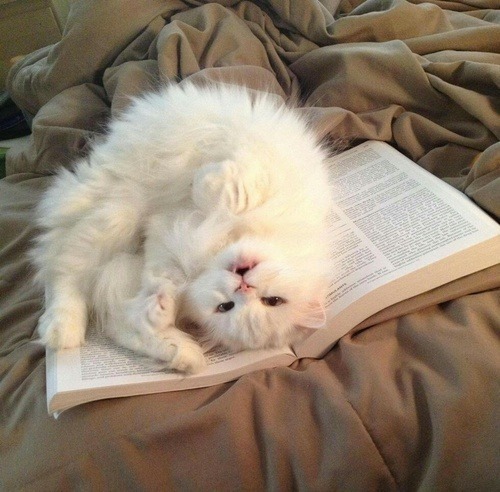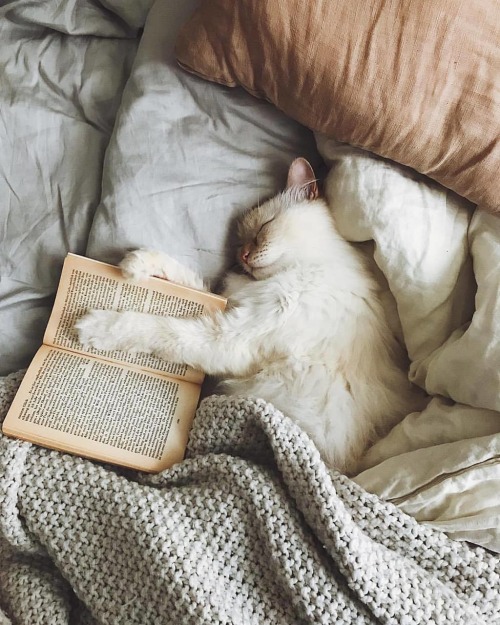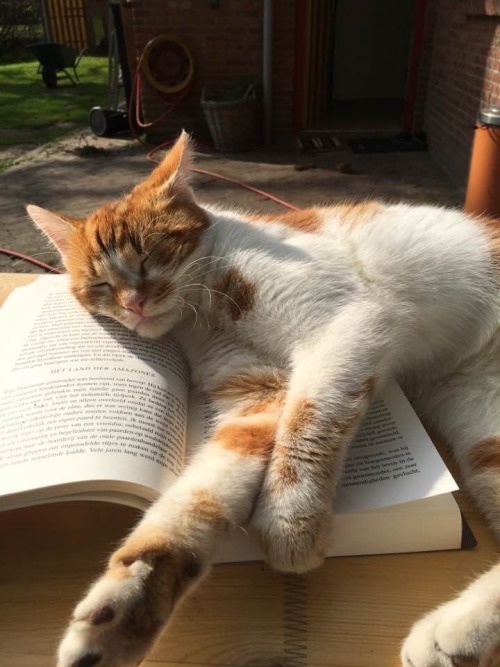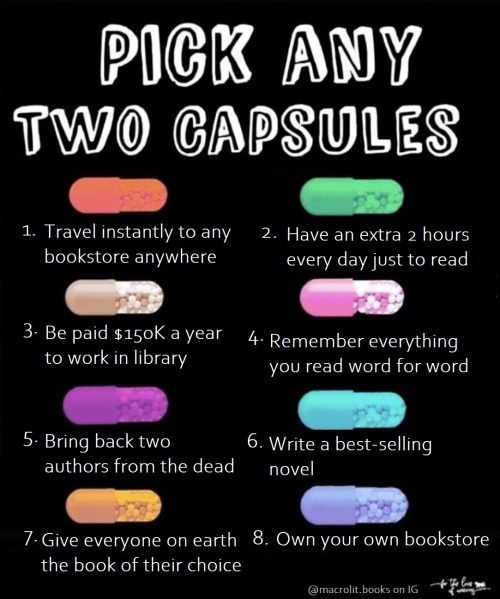Books With Cats Make The Best Reading Environment ♡
Books with cats make the best reading environment ♡




More Posts from Bibliobuddy and Others
In fact, it's the best way of living life
Strolling aimlessly in a bookshop is selfcare
“A good book will give you answers to questions you didn’t know you had. A great book will give you questions to answers you thought you knew.”
— Give the Dark My Love by Beth Revis
We need more diverse books in literature. More voices need to be represented.



The Cooperative Children’s Book Center has released the results of their 2019 survey on diversity in kidlit/YA.
We thank them for this invaluable work, note their commitment to adding Arabs/Arab Americans in future surveys, and present these graphs of their findings.
The 3,716 books surveyed have this many main characters total for the following groups:
Black/African: 11.9%
First/Native Nations: 1%
Asian/Asian American: 8.7%
Latinx: 5.3%
Pacific Islander: 0.05%
White: 41.8%
Animal/Other: 29.2%
LGBTQIAP+: 3.1%
Disability: 3.4%
“Taken together, books about white children, talking bears, trucks, monsters, potatoes, etc. represent nearly three quarters (71%) of children’s and young adult books published in 2019.” - librarian Madeline Tyner
When we looked at the breakdown for IPOC creatives who wrote and/or illustrated stories with characters of their own race, we found the following:
First/Native Nations: 68.2%
Pacific Islander: 80%
Latinx: 95.7%
Asian/Asian American: 100%*
*NOTE: these percentages include both authors and illustrators and, as pointed out by author Linda Sue Park for past surveys, Asians/Asian Americans are frequently illustrators but not necessarily authors of their own stories, meaning this is not fully reflective of #OwnVoices representation.
Black/African creatives wrote and/or illustrated only 46.4% of stories featuring Black/African characters.
This is the work that still needs to be done.

The bean jar
*gulps down pill 6 and 8*

Reblog with just TWO choices
Maybe this is why we read, and why in moments of darkness we return to books: to find words for what we already know.
Alberto Manguel, Canadian translator and essayist
Writing about a child rapist did not make Vladimir Nabokov a child rapist.
Writing about an authoritarian theocracy did not make Margaret Atwood an authoritarian theocrat.
Writing about adultery did not make Leo Tolstoy an adulterer.
Writing about a ghost did not make Toni Morrison a ghost.
Writing about a murderer did not make Fyodor Dostoevsky a murderer.
Writing about a teenage addict did not make Isabel Allende a teenage addict.
Writing about dragons and ice zombies did not make George R.R. Martin either of those things.
Writing about rich heiresses, socially awkward bachelors, and cougar widows did not make Jane Austen any of those things.
Writing about people who can control earthquakes did not make N.K. Jemisin able to control earthquakes.
Writing about your favorite characters and/or ships in situations that you choose does not make you a bad person.
It’s a shame that in this day and age these things need to be said.
I honestly think that crying over a book is one of the most prominent sign of compassion for humanity. You’re crying over someone who isn’t really there, doesn’t really exist, but you still feel for them as if you have known them your entire life.

From Ruby Redfort: Look Into My Eyes by Lauren Child
-
 dedemveben liked this · 1 month ago
dedemveben liked this · 1 month ago -
 yogamasseur reblogged this · 1 month ago
yogamasseur reblogged this · 1 month ago -
 yogamasseur liked this · 1 month ago
yogamasseur liked this · 1 month ago -
 chatskatzencats reblogged this · 3 months ago
chatskatzencats reblogged this · 3 months ago -
 s-yarle liked this · 3 months ago
s-yarle liked this · 3 months ago -
 bruxadepano reblogged this · 3 months ago
bruxadepano reblogged this · 3 months ago -
 bruxadepano liked this · 3 months ago
bruxadepano liked this · 3 months ago -
 ggu3 liked this · 3 months ago
ggu3 liked this · 3 months ago -
 janeeyre8 reblogged this · 3 months ago
janeeyre8 reblogged this · 3 months ago -
 rittlit reblogged this · 3 months ago
rittlit reblogged this · 3 months ago -
 plac-grocka reblogged this · 3 months ago
plac-grocka reblogged this · 3 months ago -
 el-warifaifa reblogged this · 3 months ago
el-warifaifa reblogged this · 3 months ago -
 sweetessenseoasis reblogged this · 3 months ago
sweetessenseoasis reblogged this · 3 months ago -
 lady-of-himring liked this · 3 months ago
lady-of-himring liked this · 3 months ago -
 protectoroffaeries reblogged this · 3 months ago
protectoroffaeries reblogged this · 3 months ago -
 protectoroffaeries liked this · 3 months ago
protectoroffaeries liked this · 3 months ago -
 nj01 liked this · 3 months ago
nj01 liked this · 3 months ago -
 monkbeauregard reblogged this · 3 months ago
monkbeauregard reblogged this · 3 months ago -
 meganraneee reblogged this · 3 months ago
meganraneee reblogged this · 3 months ago -
 daydreamersbookshelf reblogged this · 3 months ago
daydreamersbookshelf reblogged this · 3 months ago -
 little--wookie liked this · 4 months ago
little--wookie liked this · 4 months ago -
 thin-white-twink reblogged this · 4 months ago
thin-white-twink reblogged this · 4 months ago -
 thin-white-twink liked this · 4 months ago
thin-white-twink liked this · 4 months ago -
 doctoroctopusesluver liked this · 4 months ago
doctoroctopusesluver liked this · 4 months ago -
 casualstudentathletepsychic liked this · 4 months ago
casualstudentathletepsychic liked this · 4 months ago -
 rileyandrogyne reblogged this · 4 months ago
rileyandrogyne reblogged this · 4 months ago -
 rileyandrogyne liked this · 4 months ago
rileyandrogyne liked this · 4 months ago -
 cuntinaclownsuit reblogged this · 4 months ago
cuntinaclownsuit reblogged this · 4 months ago -
 cuntinaclownsuit liked this · 4 months ago
cuntinaclownsuit liked this · 4 months ago -
 idiotgorl liked this · 4 months ago
idiotgorl liked this · 4 months ago -
 emrose-gold reblogged this · 4 months ago
emrose-gold reblogged this · 4 months ago -
 emmysweet reblogged this · 4 months ago
emmysweet reblogged this · 4 months ago -
 midnightmarvels13 liked this · 4 months ago
midnightmarvels13 liked this · 4 months ago -
 essereluminoso liked this · 4 months ago
essereluminoso liked this · 4 months ago -
 sweetessenseoasis reblogged this · 4 months ago
sweetessenseoasis reblogged this · 4 months ago -
 sayonaramidnight liked this · 4 months ago
sayonaramidnight liked this · 4 months ago -
 scrawford19 liked this · 4 months ago
scrawford19 liked this · 4 months ago -
 june170 reblogged this · 4 months ago
june170 reblogged this · 4 months ago -
 dancinglikebutterfly liked this · 4 months ago
dancinglikebutterfly liked this · 4 months ago -
 soullo liked this · 4 months ago
soullo liked this · 4 months ago -
 bethanyetc reblogged this · 4 months ago
bethanyetc reblogged this · 4 months ago -
 lifeofbookworm reblogged this · 4 months ago
lifeofbookworm reblogged this · 4 months ago -
 lifeofbookworm liked this · 4 months ago
lifeofbookworm liked this · 4 months ago -
 eldiariodetiara liked this · 4 months ago
eldiariodetiara liked this · 4 months ago -
 i-m-broken-and-alone reblogged this · 4 months ago
i-m-broken-and-alone reblogged this · 4 months ago -
 ines-vs-the-world reblogged this · 4 months ago
ines-vs-the-world reblogged this · 4 months ago -
 strawbwaffles reblogged this · 4 months ago
strawbwaffles reblogged this · 4 months ago -
 strawbwaffles liked this · 4 months ago
strawbwaffles liked this · 4 months ago -
 veggiesforthelionking reblogged this · 4 months ago
veggiesforthelionking reblogged this · 4 months ago -
 veggiesforthelionking liked this · 4 months ago
veggiesforthelionking liked this · 4 months ago

19 | random literature + bookblr stuff | dormant acc, used for interactions only | more active on @sunbeamrocks
60 posts
